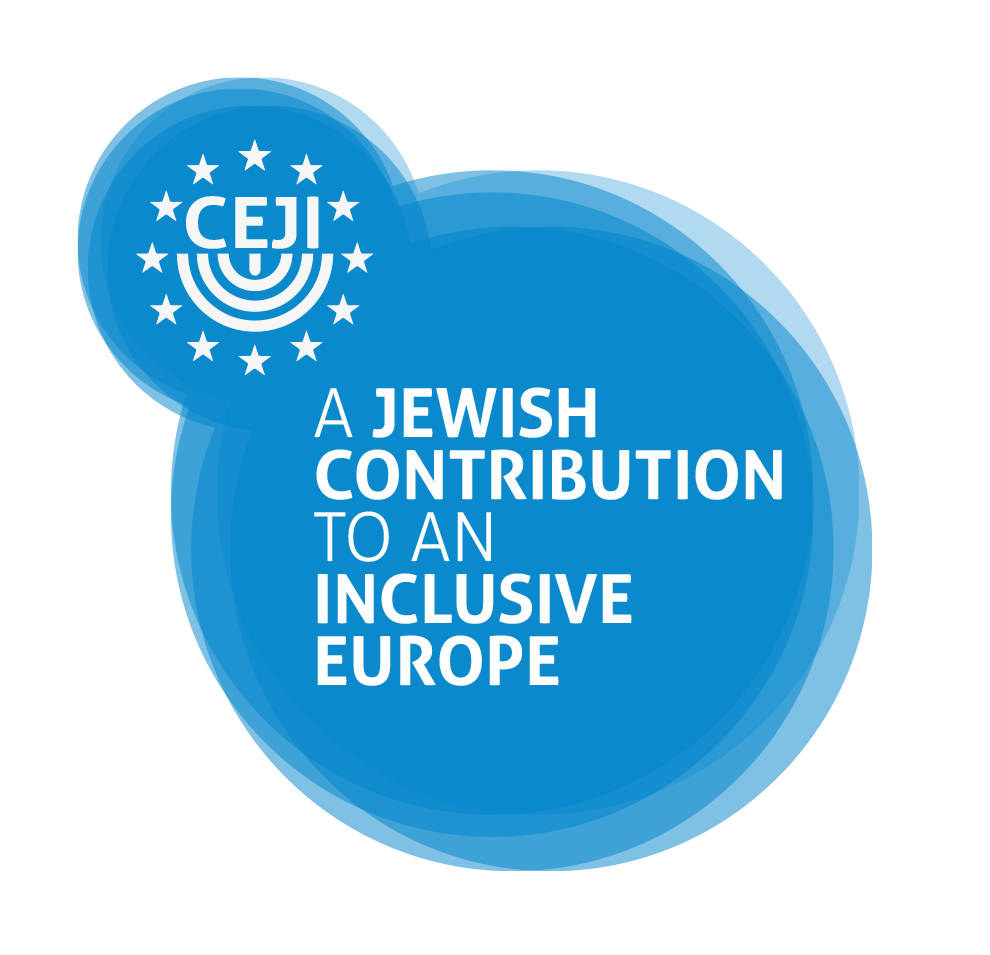CEJI Deep Dives: Incels
03/05/2022
Amy Leete, Communications Officer
As technology rapidly develops, the spaces in which hateful ideologies grow are changing at a rate never seen before. The internet offers previously isolated individuals a way to connect with other people in similar situations; for better or worse. The types of hate appearing in these communities blur the lines between traditional ‘groups’ of hate such as misogyny, racism, and antisemitism. Now, we are seeing a misogynistic intersection of other forms of hatred. Are we acting fast enough to detect and dissolve hateful communities online? What are the challenges we face in doing so? In this month’s Deep Dive, we break down the ‘incel’ community – where hateful ideologies are reaching new audiences through evolving technology.
In the 1990s, a young Canadian woman created an internet forum for lonely and sexually frustrated people to bond over their shared experiences. It was intended to be a kind of support group for those who felt sexually deprived, socially awkward, or otherwise ‘outcast’. The term ‘involuntary celibacy’ – shortened to ‘incel’ – was popularised. As the ‘incel’ label grew, subsections of the community began amplifying extreme ideologies – including anti-woman hate and calls for violent aggression against women as a whole. Now, dozens have been killed in a series of terrorist attacks by members of the same group. Yet, unlike neo-Nazis or religious extremism, experts disagree on whether the incel community should be classified as a terror threat – or if it is a matter of lone wolf attacks by mentally ill individuals.
The shared feature of all ‘incels’ is that they are men who feel unable to obtain romantic or sexual relationships with women. They believe their celibacy is not of their own choosing, but rather, is a result of rejection. They believe that women, driven by animalistic desires for the best breeding partner, will always choose attractive, muscular men – known in the community as ‘chads’. Incels, at the bottom of the hierarchy, believe they are genetically inferior and therefore universally dismissed by women.
The main point of contention for experts is that incels are ethnically, financially, and geographically diverse. This makes it difficult to identify incels in the way extremists have traditionally been defined, leaving public bodies with few resources to tackle the issue. The International Centre for Counter-Terrorism has already begun to explore how counter-terrorism frameworks are based on outdated models:
‘Fundamentally, counter-terrorism frameworks are ill equipped to address ‘non-traditional’ threats that defy easy categorisation. Created in response to the War on Terror, which identified and classified Islamist organisations with strong hierarchical command structures, this model is outdated to represent the contemporary threat landscape. Identifying and tracking groups is inadequate when the threat can no longer be neatly classified into groups, or when individuals choose whether to self-identify with labels at any given moment.’
While little verifiable research exists – the anonymity of most incel forums makes truthful data gathering impossible – crime statistics suggest an incredibly diverse community. Sympathisers, as well as incels themselves, often consider the term incel to be a neutral descriptor of a state of being – like homelessness, or disability. They deny any form of group, ideology, subculture, organization, community, or movement. Yet, shared ideals expressed through wildly popular coded speech (incel.wiki defines over 200 specific terms used exclusively by the incel community) – and preliminary research papers – strongly suggest that a large amount of self-proclaimed incels have commandeered an online space to share their ideology.
While it should be noted that identifying as an incel is not a crime in itself, the community is rife with racist, antisemitic, and misogynistic terms and ideas. A wildly popular tenet of the incel ideology is ‘blackpill’ – the idea that an individual’s attractiveness is unchangeable and assigned at birth. In an attempt to justify such ideology, pseudo-scientific claims that objective attractiveness can be measured through skull shape and size (produced lateral orbital rims, facial width-to-height ratio, and nose size) are revered as fact. Unanimously, these claims are white supremacist in nature – with the term ‘ethnicel’ commonly used to refer to all non-white incels, regardless of their minority status. ‘Currycel’, ‘blackcel’ and ‘ricecel’ are commonly used terms for specific ethnic minorities within the community. The ‘Just be White theory’ argues for a racial hierarchy within dating, of which white men are revered and ethnic minorities should attempt to modify their appearance to appear white if they wish to find a partner. Belief in the supremacy of a typically white appearance has led some to advocate for the eugenic ‘breeding out’ of ethno-diverse features such as darker skin, aquiline noses and darker/coarser hair. Illustrations of ‘incels’ and ‘chads’, such as the one below, proclaim the necessity of white ethnic features for men to be able to find sexual partners.
Incels, as a phenomenon, are gaining traction as an area of research as the number of recorded hate crimes increase.
Last year, Italian Police arrested a neo-Nazi sympathizer on terrorism-related offenses in the northwestern port city of Savona. Together with his underage friend, the suspect explicitly incited to a “violent revolution” against the “State occupied by Zionists”, a well-known antisemitic conspiracy theory, and even the physical elimination of Jews. During police interviews, he readily described himself as an ‘incel’, with one of his associates reportedly telling him that he was “planning an attack on the synagogue of Rome”. Elliot Rodger, the perpetrator of the 2014 Isla Vista killings, stated in his ‘incel manifesto’ that ‘the first strike against women will be to quarantine all of them in concentration camps… I can oversee the entire concentration camp and gleefully watch them all die.’ The 2018 Hot Yoga Tallahassee perpetrator was reported by fellow students to have openly admired Hitler and praised the terrorist organisation Aryan Nations.
The United States Secret Service released their first case study on ‘misogynistic extremism’ in March 2022. The RAN Network, in October 2021, published a ‘first scan’ of the incel community with a series of recommendations for further action against radicalisation. But efforts are largely individual, and few – if any – networks or organisations exist with the sole purpose of tackling hate crimes committed by incels. Vox offers an explanation: ‘The intersection between this age-old misogyny and new information technologies is reshaping our politics and culture in a way we may only dimly understand — and may not be prepared to confront.’
The running theme offered by research into incels, including the US Secret Service and RAN reports, is the importance of early intervention. Criminal profiles and self-described experiences on incel forums repeat the same markers: childhood bullying and traumas, an inability to form friendships offline, concerning and threatening behaviours and communications towards women, and often a history of disability or mental health issues. Whether incels can be considered a unified community or not, there are recurring themes in the profile of those who turn violent.
Research universally suggests that a unified approach to incels can be effective. The recommendations made thus far by organisations can largely be broken down into two categories: changing perceptions, and applying community resources.
A shift in the way we look at incels must occur for the threat to be adequately considered. Though misogynist incels are often perceived as a movement without political aims, violent perpetrators have the same type of far-reaching goals that white nationalists have: to completely change the culture and politics of society to favour their own group. Viewing incels as a genuine extremist threat, and not a niche internet phenomenon, allows the correct amount and type of resources to be allocated.
The importance of community resources cannot be underestimated. The ideological foundations of the incel community are not new; they stem from racist and antisemitic ideas of white supremacy that have been perpetuated for decades. Dismantling the idea of eugenics, and the pseudo-scientific research that the incel community is based on, dismantles the community itself.
Developing a holistic approach to extremism is essential for tackling new extremist communities. Governments and civil society organisations need to consider more integrated approaches to gender and other equality policy areas. The misogynistic intersections with all other forms of hatred can no longer be denied. Ultimately, there are a complex series of reasons that young people may turn to extremism communities. Writing for CEJI in 2018, Robin Sclafani explained that socio-economic, historical, cultural, and communication-based factors contribute to one’s vulnerability or resilience to extremism.
The cultural factors can be broken down into three main areas1:
1) Bonding Capital – the importance for people to be familiar with and feel anchored to one’s own cultural heritage(s) and in the “mainstream” culture, feeling free and safe to share oneself with others.
2) Bridging Capital refers to trust and confidence in people from other groups; support for and from people from other groups; having the skills, knowledge and confidence to connect with other groups; valuing inter-group harmony; and active engagement with people from other groups.
3) Linking Capital refers to trust and confidence in government and authority figures; trust in community organisations; having the skills, knowledge and resources to make use of institutions and organisations outside one’s local community; ability to contribute to or influence policy and decision making relating to one’s own community.
As a community defined by their isolation, it is clear to see where incels are lacking in these areas. Incels identify themselves entirely outside of mainstream culture; many have defined their isolation as their leading motivation for terror attacks. Feelings of helplessness and a fundamental inability to participate in mainstream society are the core tenets of inceldom. Projects that identify these specific and intersecting bias motivations in hate crime and hate speech, like Facing Facts, are integral to understanding – and developing ways to prevent – hate speech and crime before it happens.
While closed online communities often present as impenetrable and impossible to understand, the ideals on which they are built are not new. The tools to tackle these beliefs already exist, such as those offered through citizenship education, but these tools must be scaled up, strengthened and demonstrated by political, cultural and local leaders. If we are to avoid more incidents of incel hate crime and hate speech, our models for defining, addressing and preventing extremism must evolve to reflect a rapidly digitalising world.
Footnotes:
1Grossman, Michele, Michael Ungar, Joshua Brisson, Vivian Gerrand, Kristin Hadfield, and Philip Jefferies. 2017. “Final Research Report for Understanding Youth Resilience to Violent Extremism: A Standardised Research Measure.” In Melbourne, Australia & Halifax, Canada: Alfred Deakin Institute for Citizenship and Globalisation, Deakin University & The Resilience Research Centre, Dalhousie University.



